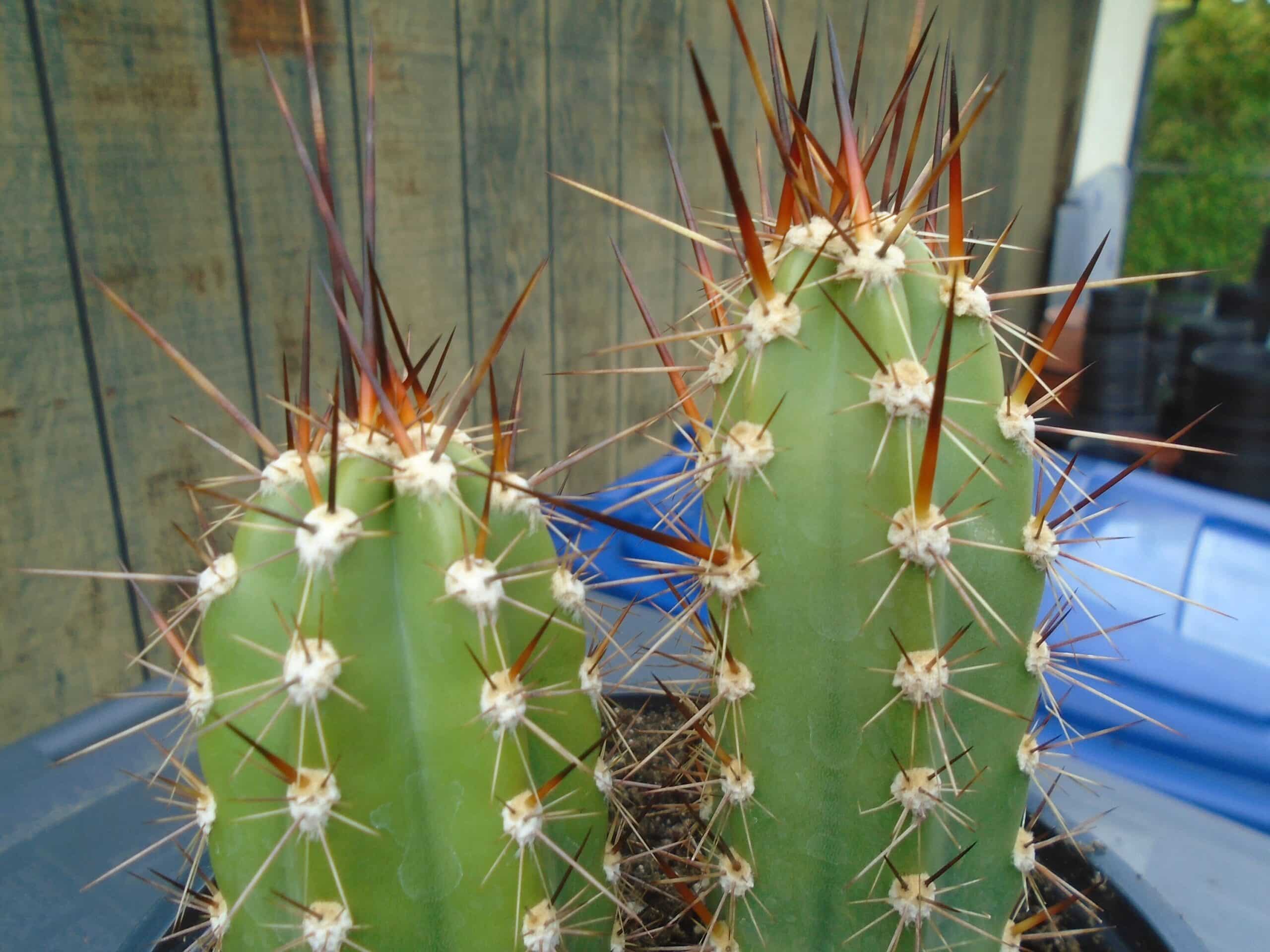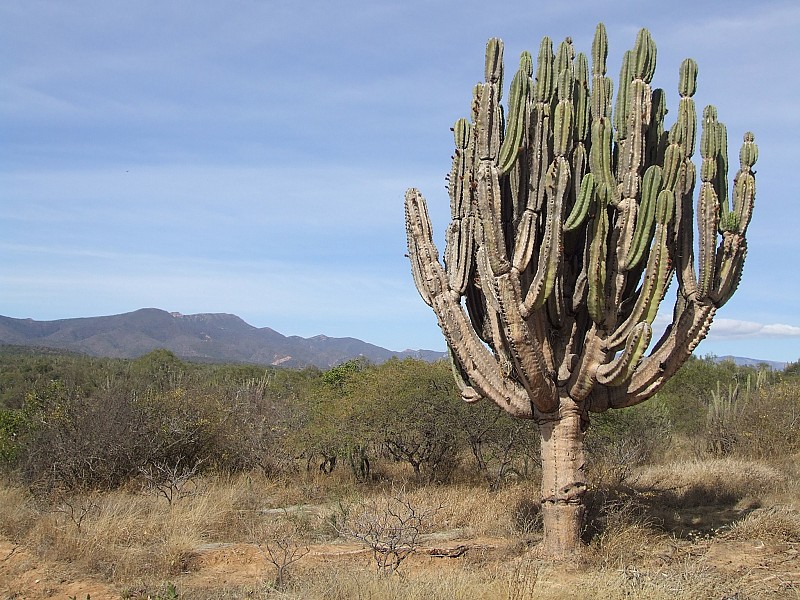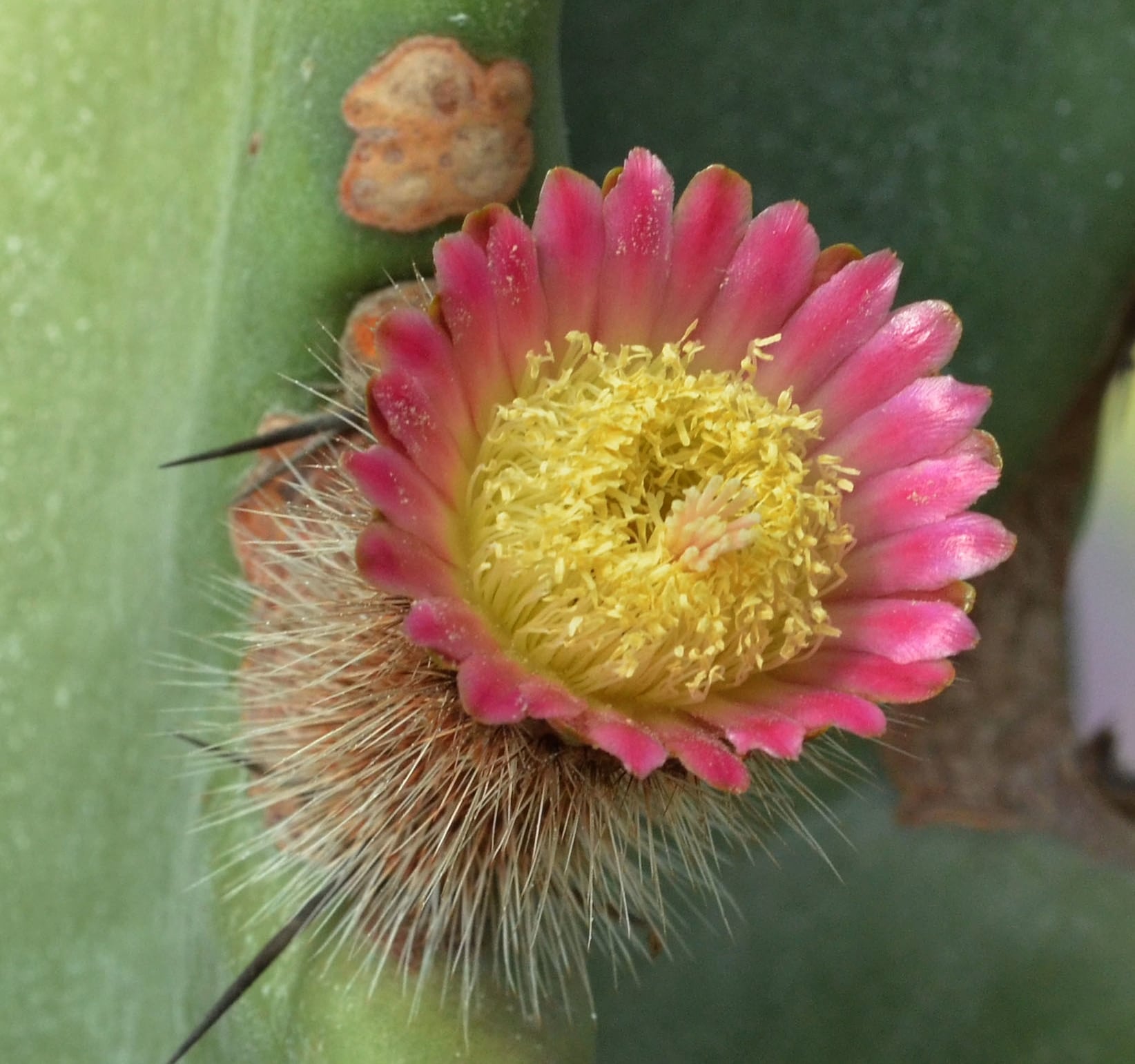
Image – Etsy.com
What do you think of columnar cacti? They are plants that usually protect themselves with thorns, especially during their youth, since they are more likely to reach adulthood that way. Once they gain height, they can lose all or part of it, or continue to develop but shorter. In the case of our protagonist, Neoraimondia Herzogiana, remains a prickly cactus throughout its life.
In addition, it must be said that usually grows at a fairly fast rate, unlike other cactus species that are generally slow. So, it is certainly very interesting to plant it in a garden.
Where is it from and what is it like?

Image – cactusinhabitat.org
The Cactus Neoraimondia Herzogiana it is endemic to Bolivia. To be more exact, it grows at altitudes between 600 and 1900 meters above sea level, so we are talking about a plant capable of resisting cold if not extreme. This is undoubtedly something very interesting to know, since we can choose to grow it outdoors throughout the year if the weather allows it.
If we talk about how it is, that is, its characteristics, it must be said that It is a cactus with a columnar shape that over time acquires the shape of a candelabra. It can be 15 meters tall, but its main stem remains thin: about 20 centimeters thick. As I said in the introduction, it protects itself with thorns, specifically, it has about 5 that sprout from the center and a dozen that are radial. The latter are shorter than the central ones, measuring only 1 or 2 centimeters long.

Image - Flickr / Cerlin Ng
Flowers They are only produced by mature specimens. They measure about 6 centimeters in diameter and are white or pink.. Once they are pollinated, they produce fruits which are suitable for consumption.
What are the care it requires?
We now go on to explain the care that must be given to the Neoraimondia Herzogiana. And it is that, of course, it is interesting to keep it for a long, long time, so it is important that we are going to see everything we must do to achieve it:
Location
It is a plant that requires sunny exposure from the beginning of its life. But if you bought it in a supermarket (in Spain, the Aldi and Lidl chains usually sell young specimens from time to time), or in a nursery where they kept it indoors, you should NOT expose it to direct sunlight because it would burn. In these cases, it is preferable to put it in semi-shade, or even in shade but in an area where there is a lot of light.
When it has been with you for at least a month, and whenever it is spring, it will be good to start exposing it to direct sun for a while - no more than an hour - every day.
Earth
- Flower pot: If you are going to have it in a pot, you must put cactus soil on it. Now, I recommend that you plant it in the ground as soon as possible, since that way you will get it to grow a little faster.
- Garden: the soil in the garden must quickly absorb and filter water. Cactus roots do not tolerate being always wet. In addition, it is important that they can develop well; hence the earth must also be light.
Irrigation
Irrigation of the Neoraimondia Herzogiana it will be done when the earth is completely dry. This can be once a week, or even once a month if it's winter. It all depends on the weather and the season of the year. In case you have any doubts, check to see if it is dry or not by inserting a plastic stick all the way to the bottom.
In any case, when it comes to cacti, often the best thing in these doubtful cases is to wait a while longer. Of course, if it reaches the extreme that the earth is extremely dry and compact and it is very difficult for it to absorb water, what you have to do is submerge the pot in a basin with water for half an hour.
Subscriber
When to fertilize the cactus Neoraimondia Herzogiana? It has to be done in the middle of the growing season, which begins in spring and ends in autumn. when temperatures begin to drop below 15ºC. To do this, you have to use fertilizers that are indicated for succulent plants, since otherwise we could be providing more nutrients than you really need.
Of course, I advise you to use organic fertilizers to take care of the environment, and above all, always follow the instructions for use that you will find on the product.
Multiplication
It is a plant that It multiplies both by seeds and by cuttings throughout the spring, and you can even in the summer as long as it's not done during a heat wave.
Rusticity
Withstands the cold, but only up to -3ºC and occasionally; That is to say, if in your area there are frosts every year and they happen several times during the winter, it is best that you put the cactus inside the house. But if the frosts are very rare and also very weak, then you will have the option of keeping it outside.
did you know the cactus Neoraimondia Herzogiana?





